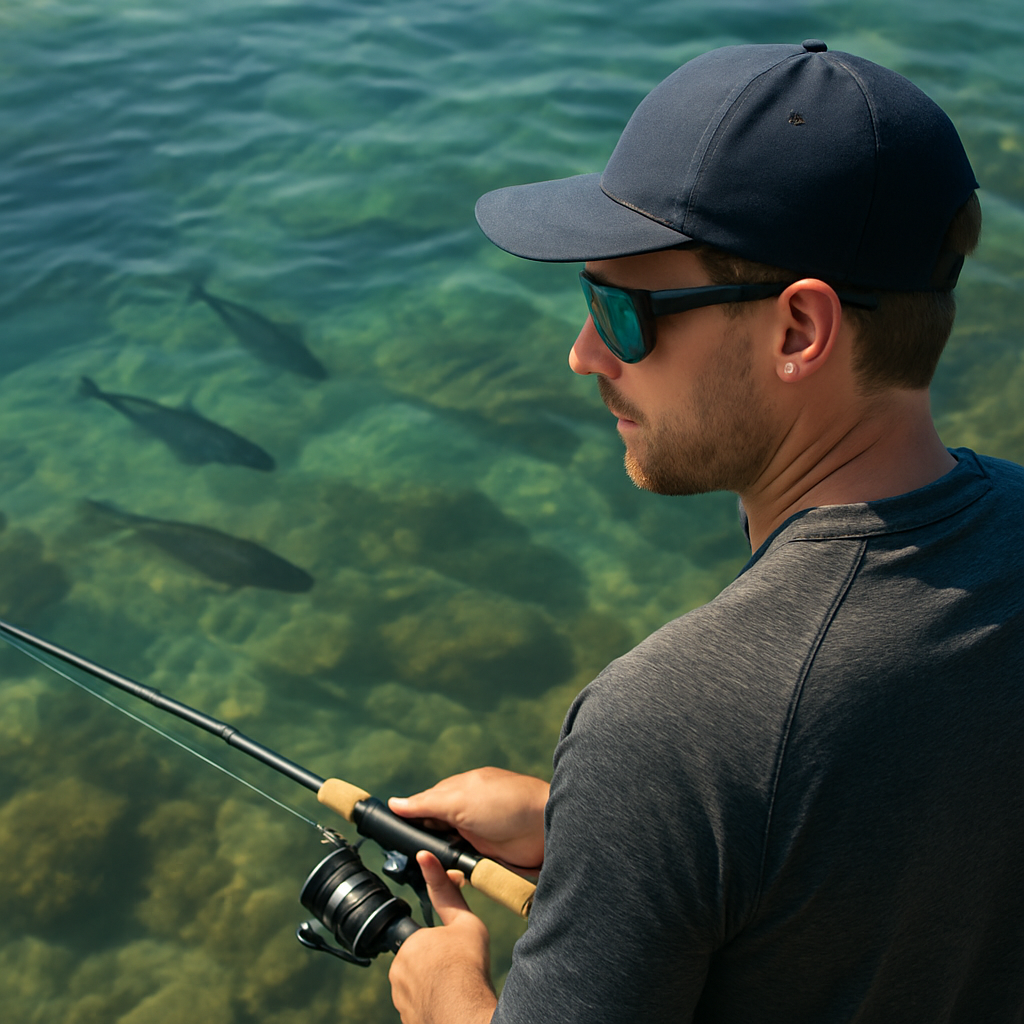
Optical Advantage
Share
🎣 Optical Advantage – Spotting Fish Like a Pro
Some anglers seem to spot fish before they even cast — and it’s not just luck. It’s about training your eyes, understanding the water, and using the right tools to turn opportunity into action.
Here’s how to give yourself a serious optical edge the next time you hit the water.
🕶️ Polarised Sunnies – Non-Negotiable
If you're not wearing polarised sunglasses, you're fishing blind. These cut the glare off the water’s surface, letting you see:
– Garfish cruising near the top
– Squid shadows hugging the bottom
– Flathead shapes on sandy patches
– Crabs and yabbies moving in shallow reeds
Tip: Go amber or copper lenses for inshore or estuary work — they enhance contrast and depth.
🌊 Learn to Read Water Movement
Fish movement = water movement.
Look for:
– Boiling or flickering near the surface
– Subtle shadows or silhouettes darting in tidal current
– Mullet and gar schools flashing when turned side-on
Still water isn’t “dead” — it’s just harder to read. Use a float line or burley trail to make fish reveal themselves.
🐟 Train Your Eyes on Structure
Don’t scan randomly — scan with purpose:
– Look along weed edges, rock shadows, pylons, and drop-offs
– Watch for change in depth, colour, or texture — that’s where fish sit
– Practice spotting one species (like squid) until your brain learns its shape
It’s not about seeing more, it’s about seeing right.
💡 Pro Tip: Light & Shadows Matter
Fish are visible at different times of day:
– Early morning: Glare is lower, fish are active
– Midday: Use high sun to see deeper into clear water
– Overcast days: Surface disturbance gives clues (not always sight)
If the water’s too dirty to see fish — try pulling them in with scent instead of searching.
🎯 Wrap-Up
Some fishos just cast and hope.
The smart ones? They look before they leap.
Polarised lenses + water-reading skills + structure scanning = Optical Advantage.
Train your vision, and you’ll spot fish where others see nothing.
